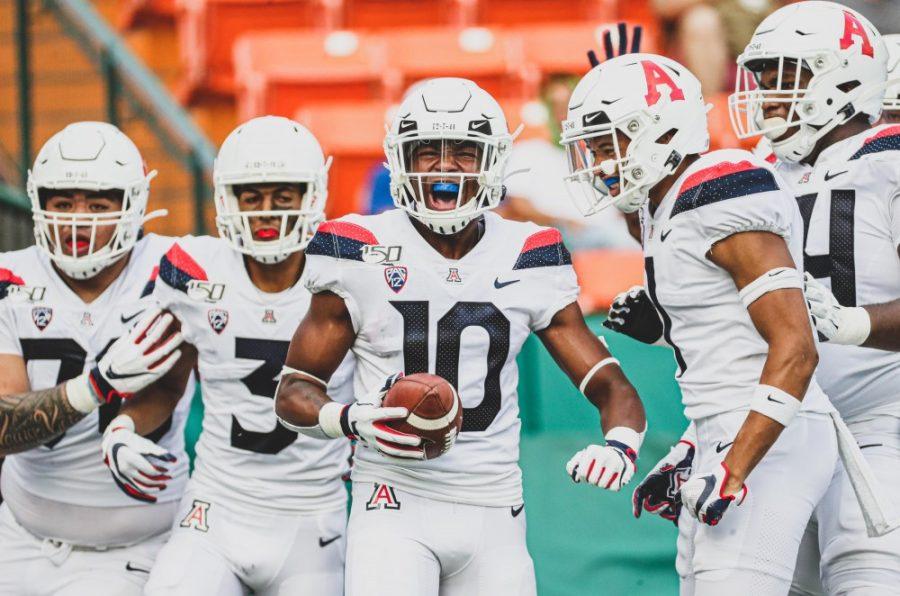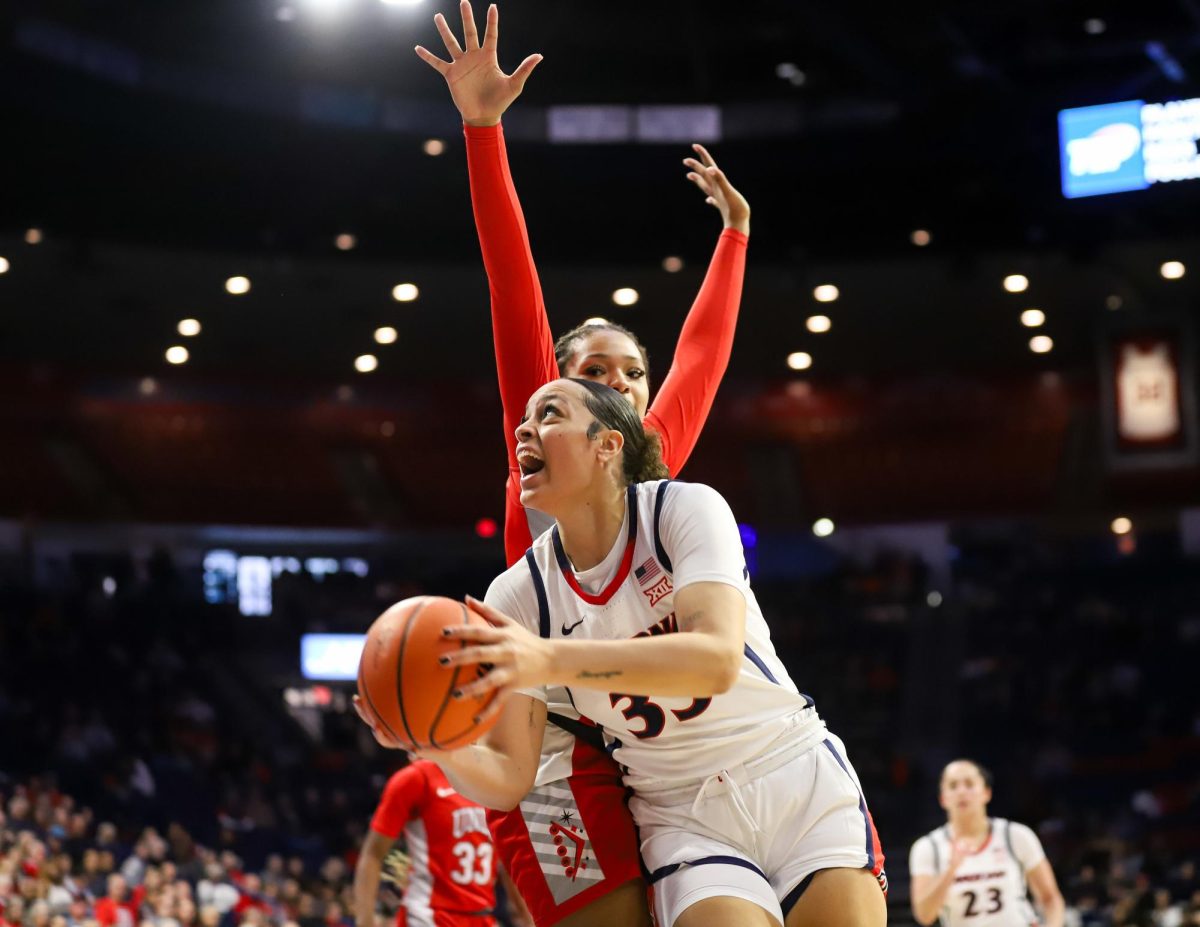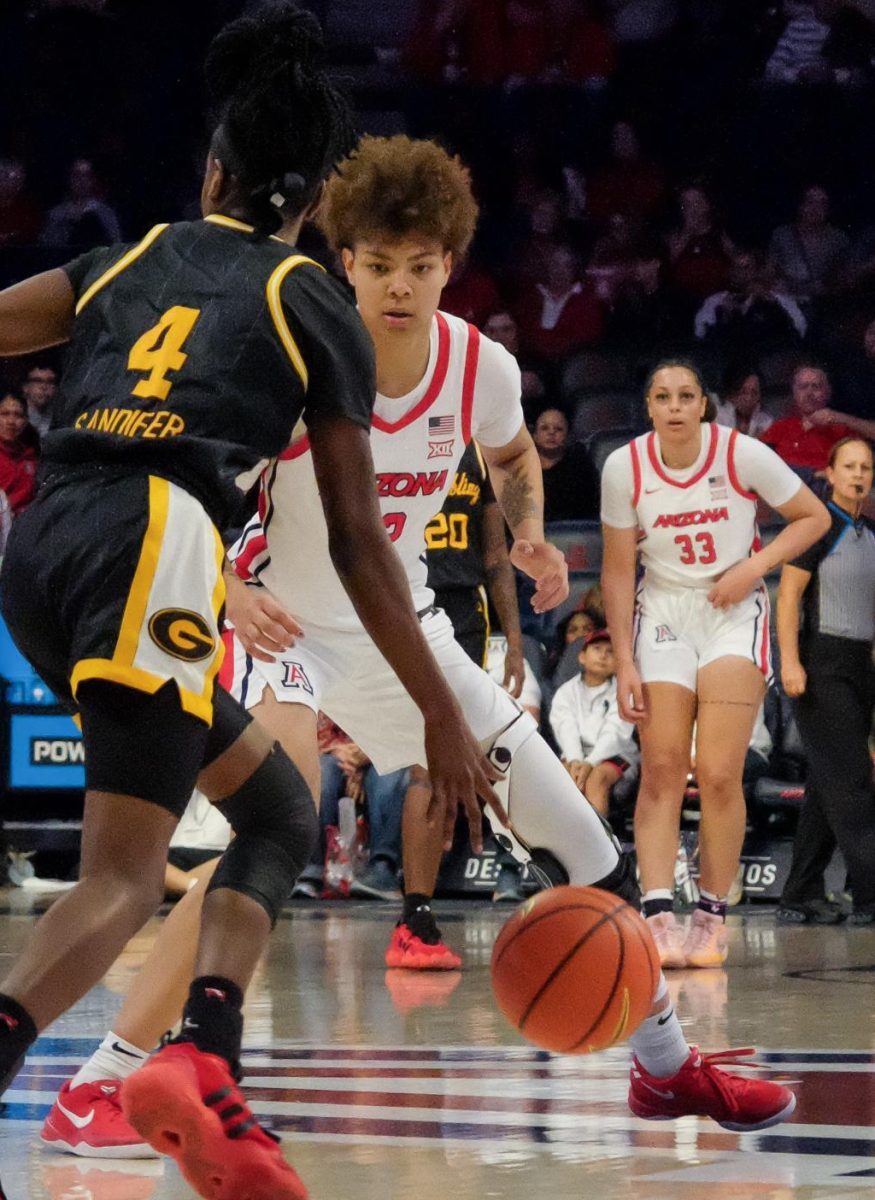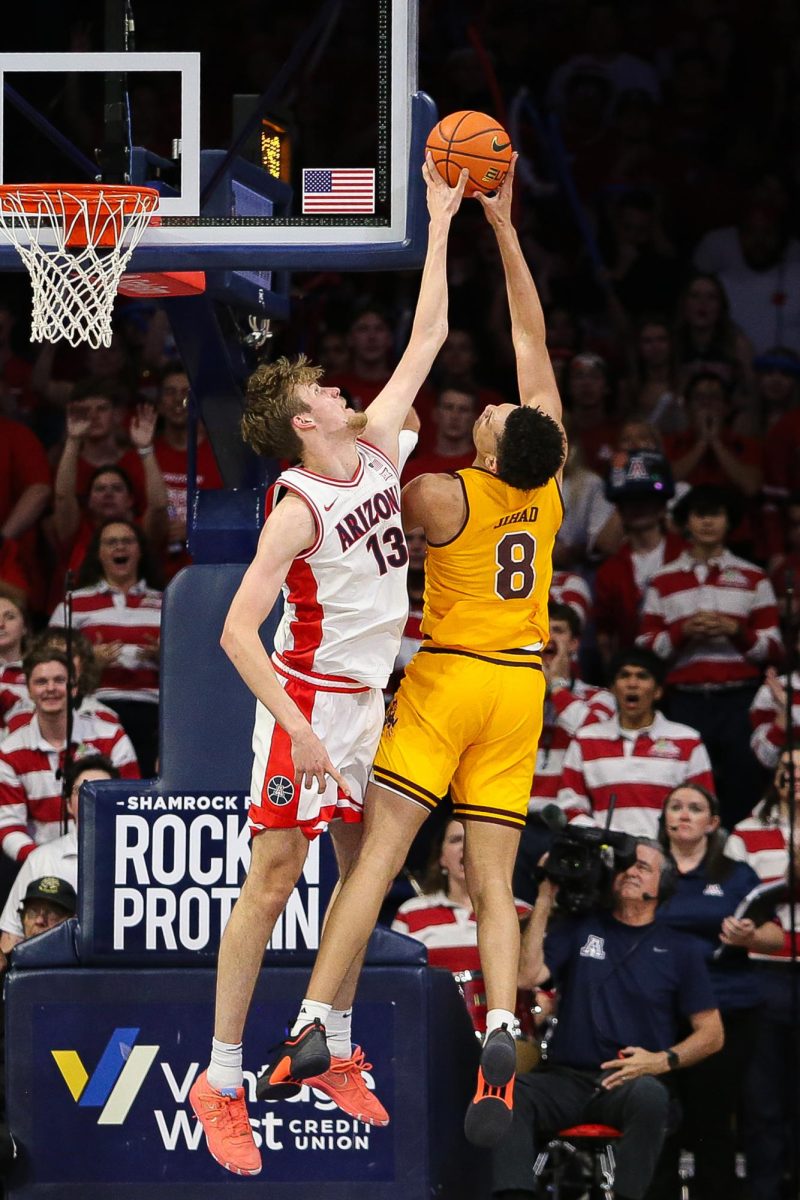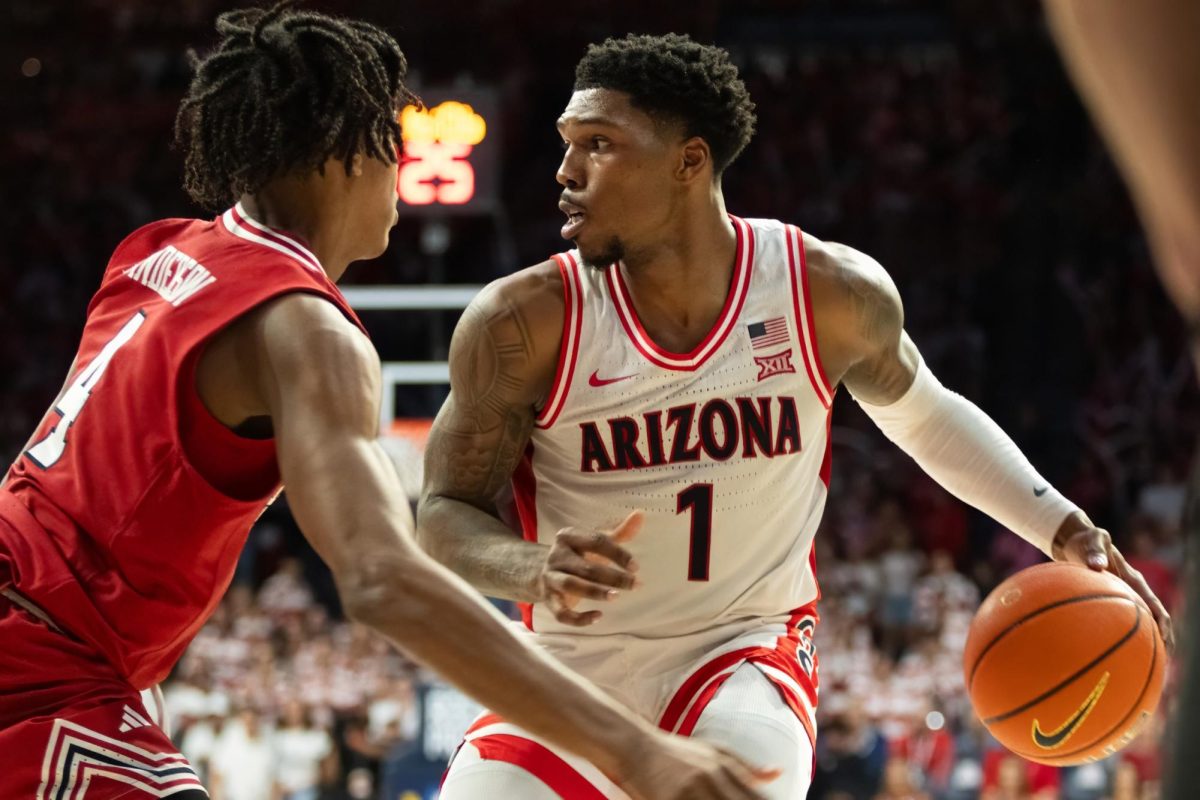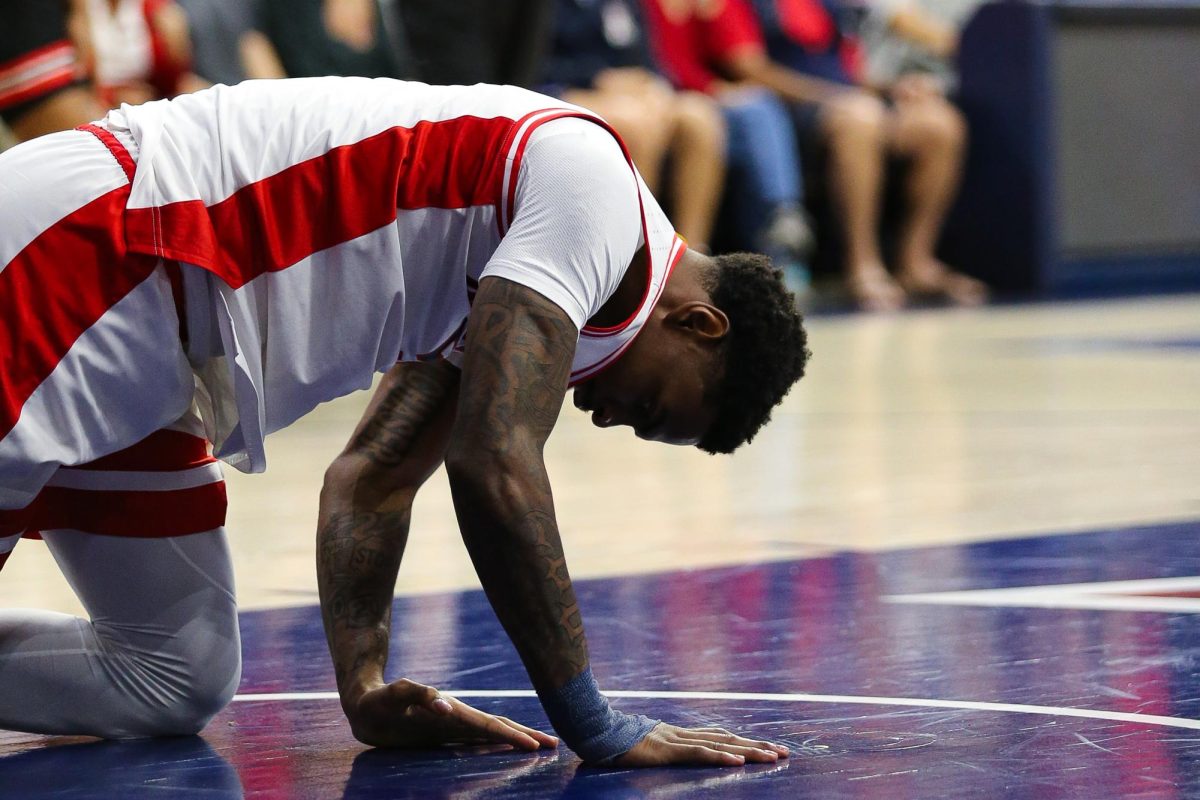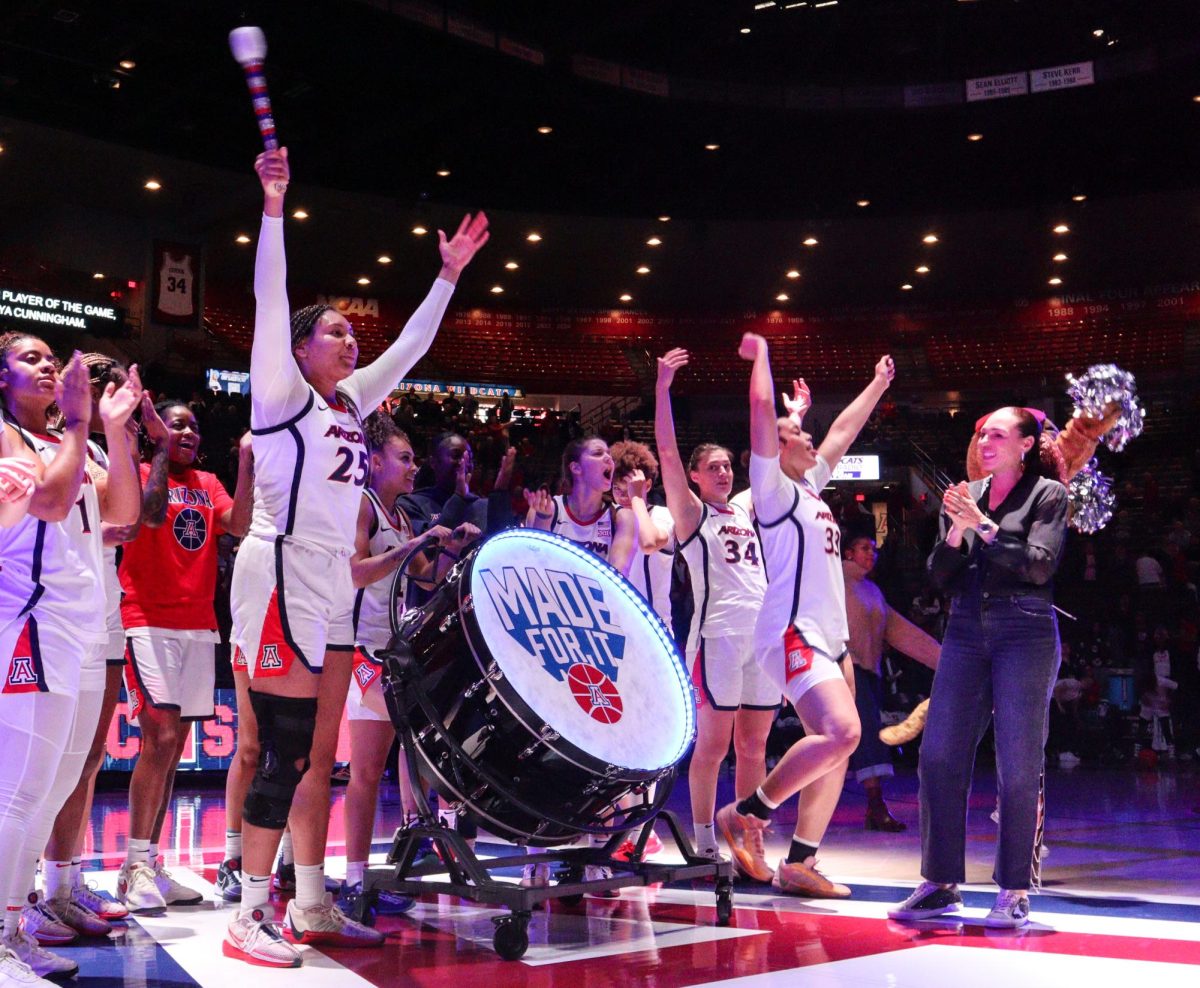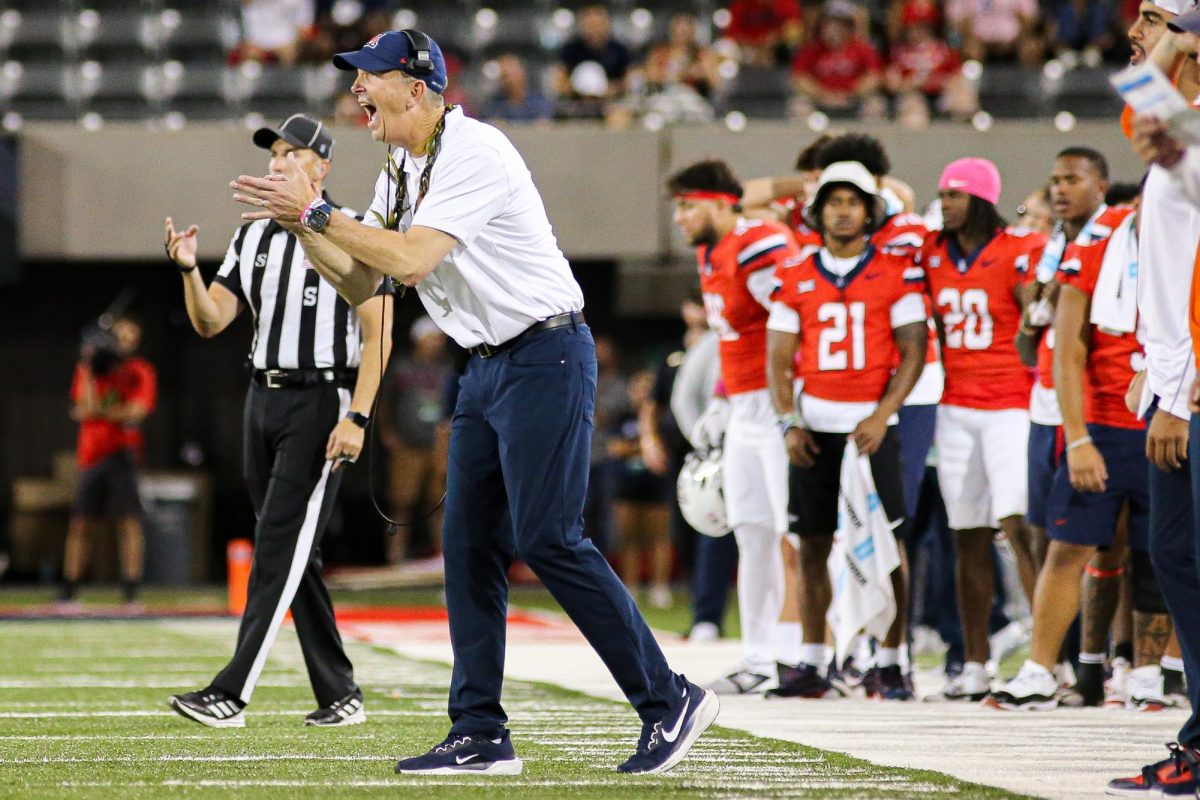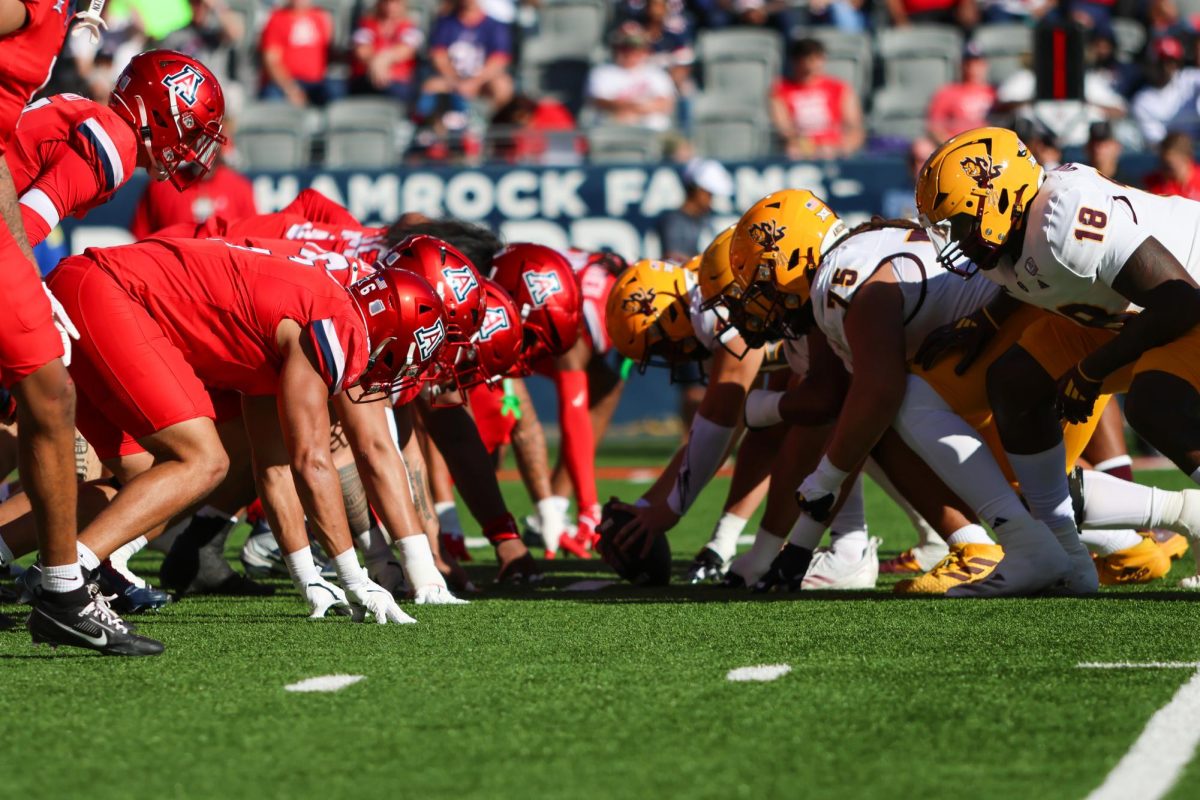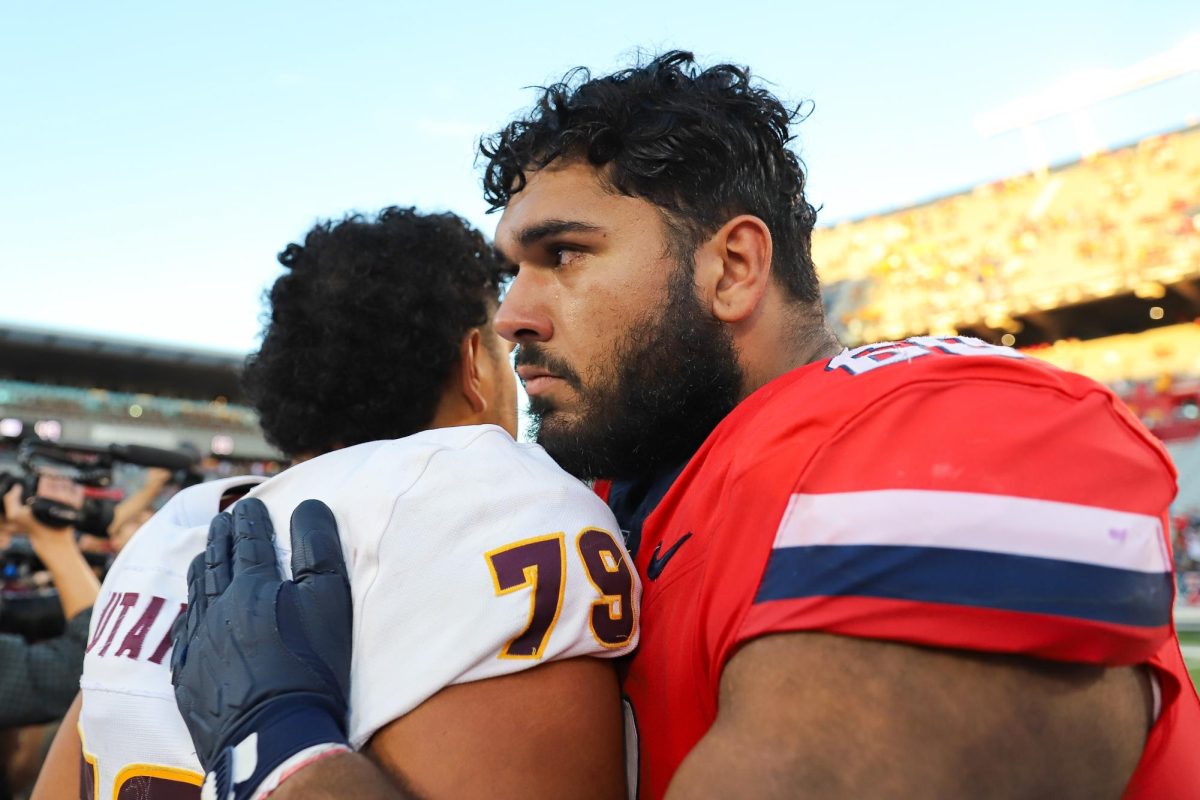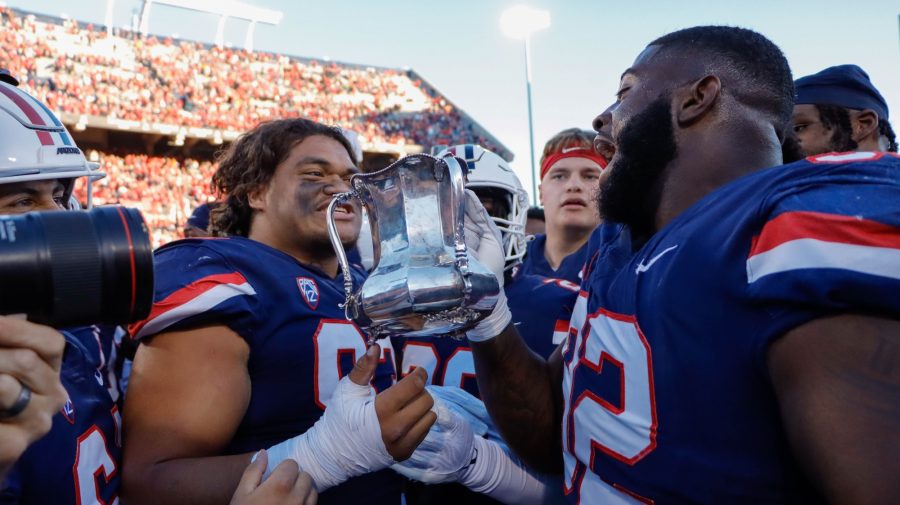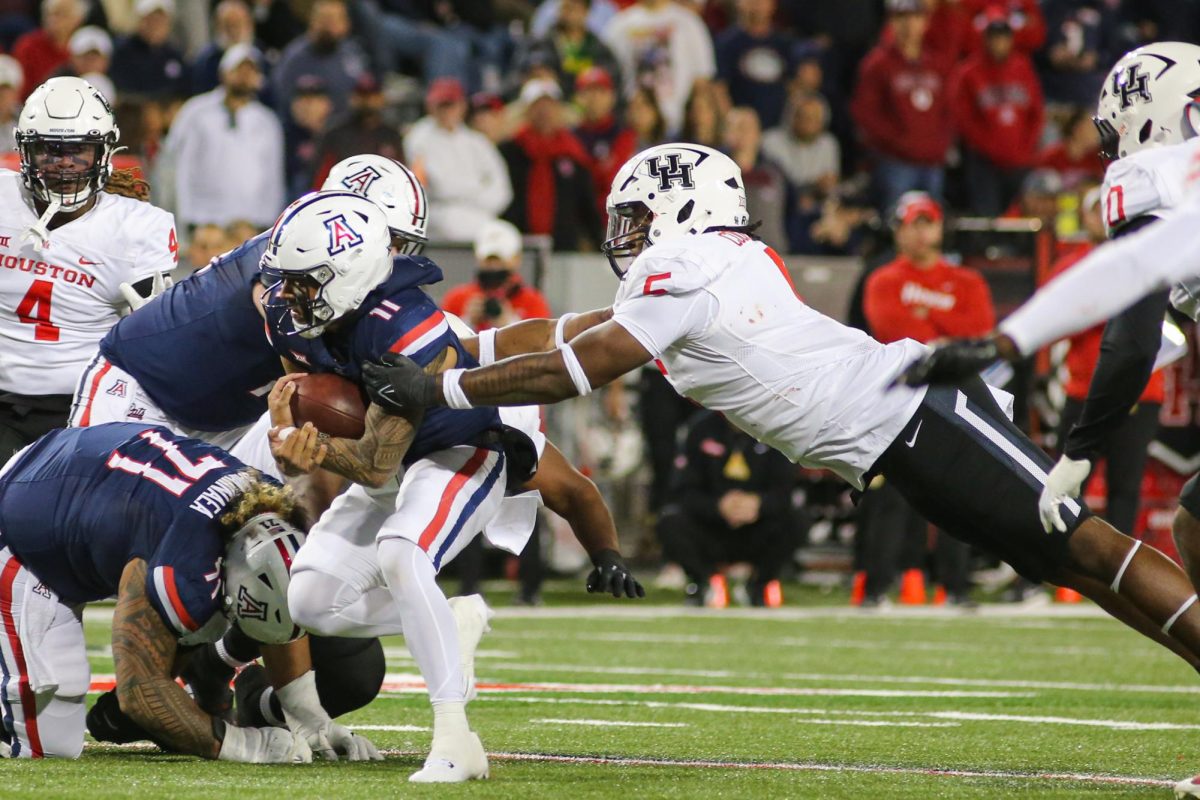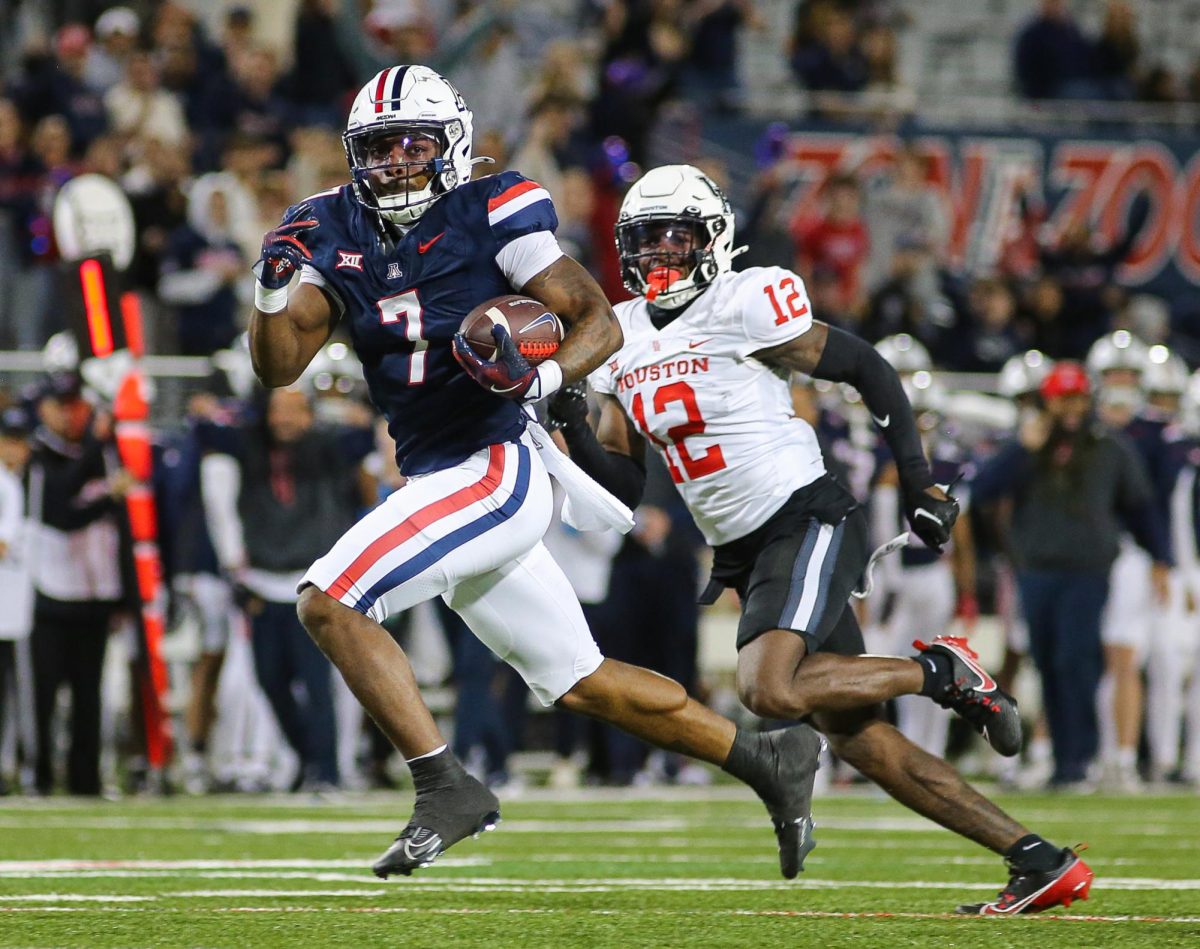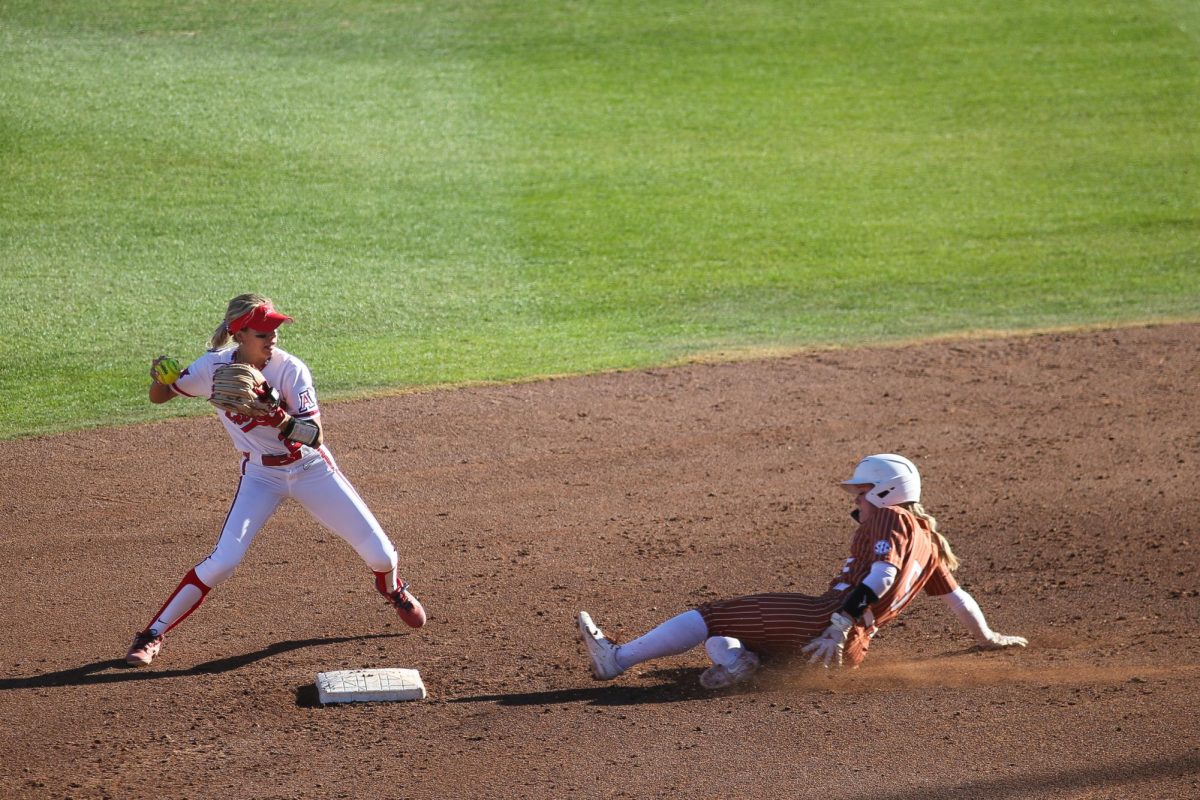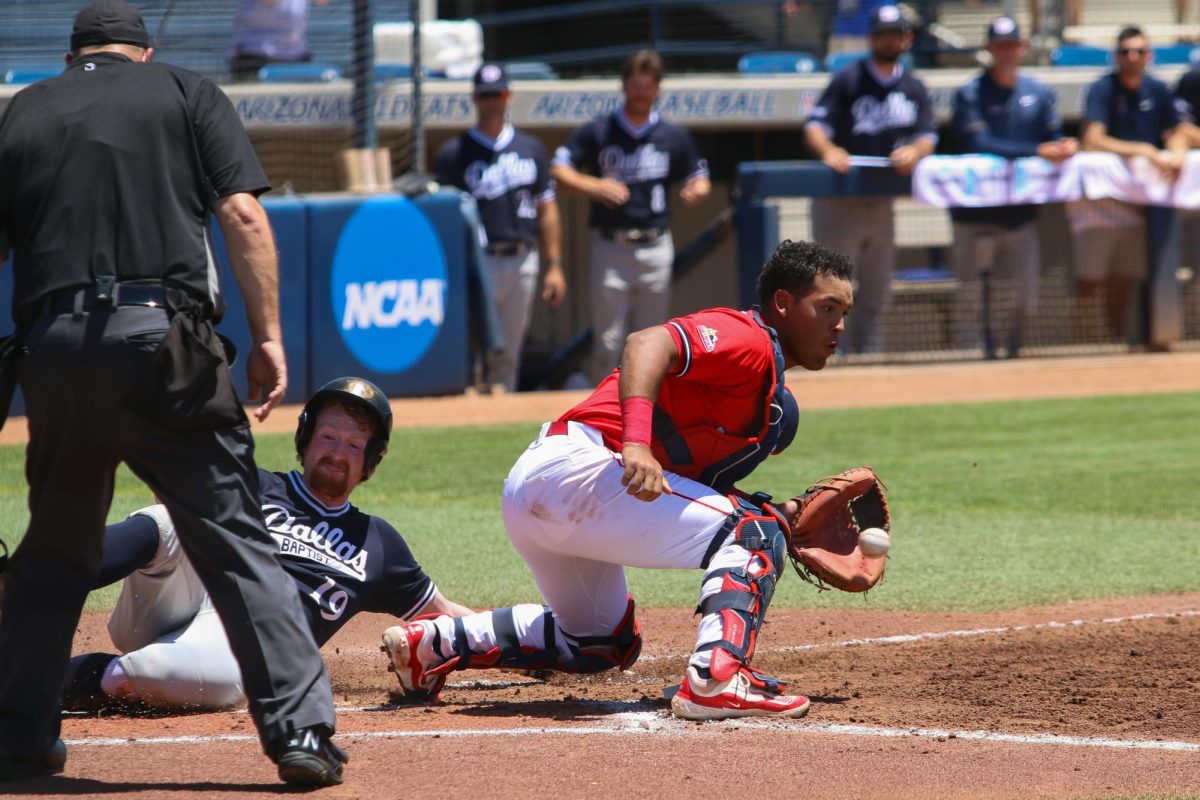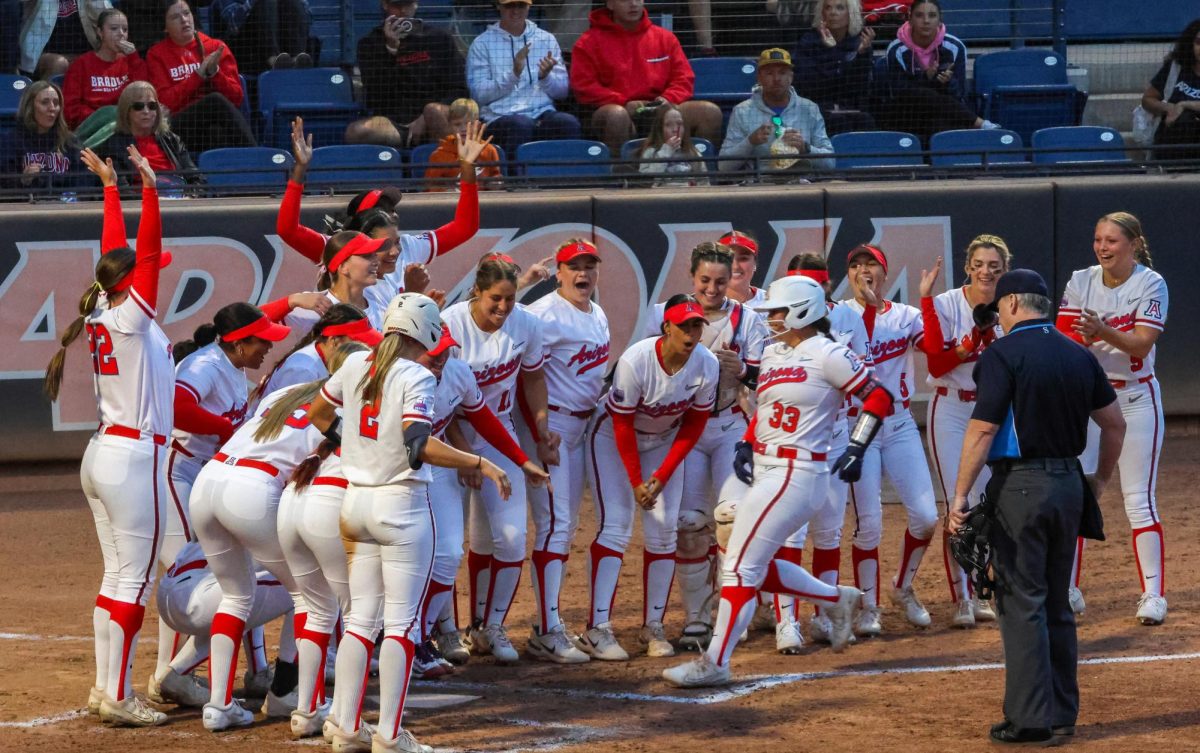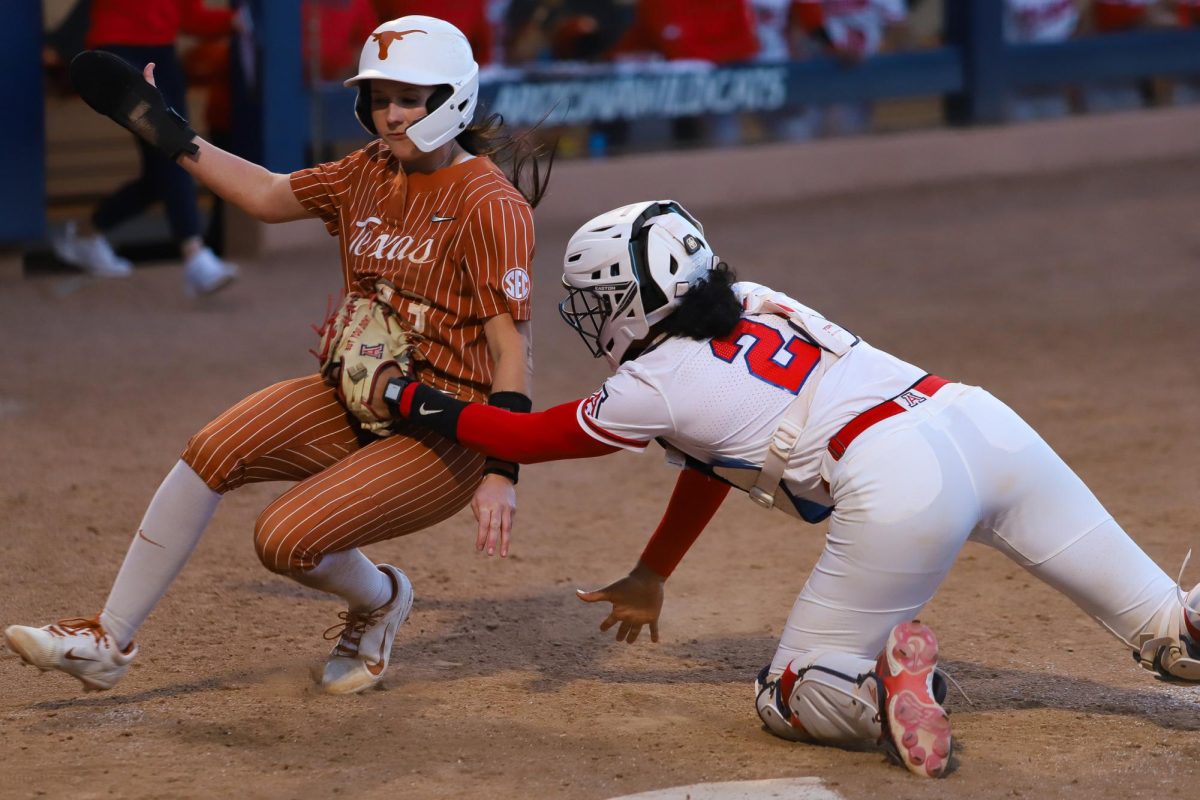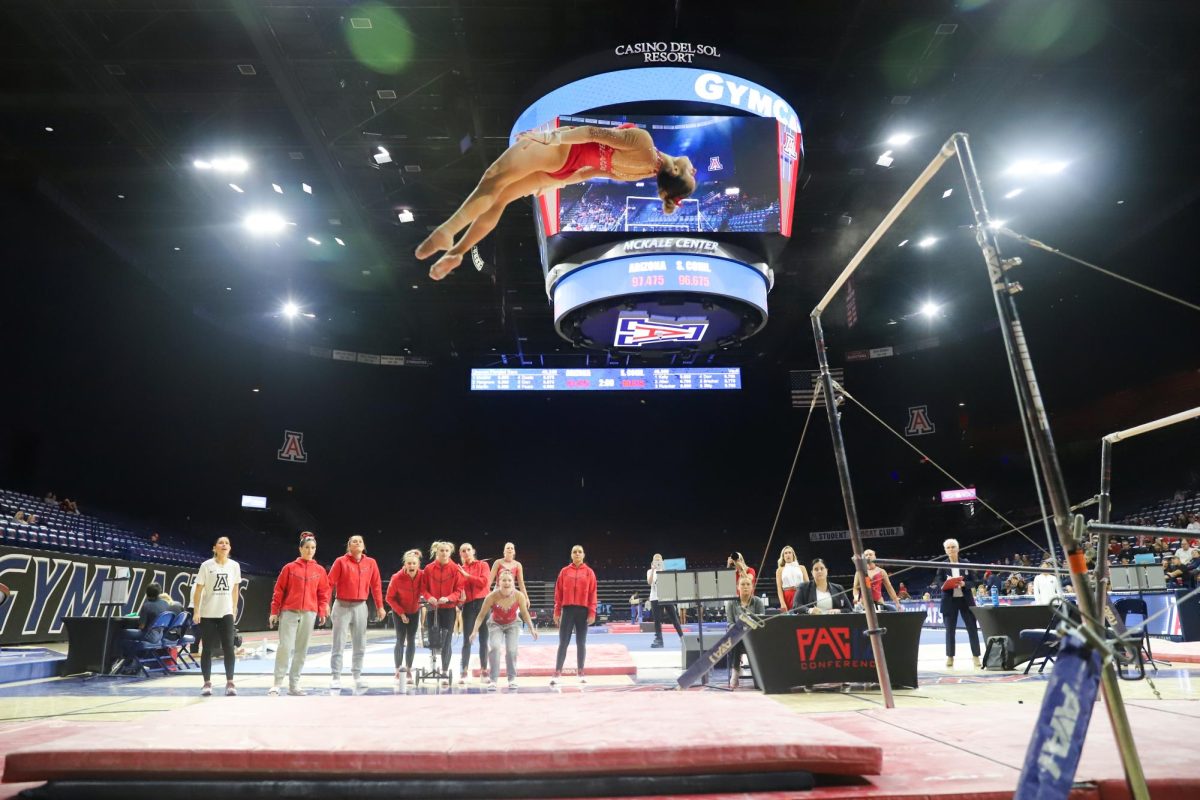The iceberg that ultimately sunk the ship of the Pac-12 could be seen from miles away. The fate of the conference, which was to postpone all sports within the Pac-12 until January 2021, was inevitable.
The decision-making of the Pac-12 rested solely on science and the reality of the entire situation. University of Arizona Athletic Director Dave Heeke said in a Zoom press conference on Friday, Aug. 14, that the determination of delaying sports was “gut-wrenching” as he continued to stress the priority of the health and safety of all of the UA’s student-athletes.
Emphasis on the “all” part, as it was a surprise to hear that every athletic program was being postponed, not just the high-risk contact sports like football.
“We take into consideration all of our student-athletes,” Heeke said. “You can interpret different sports in different manners. We certainly understand that golf isn’t like football, but in the best interest of all of our student-athletes, our presidents ultimately felt it was wise to just pause. You’re talking about all of this — not just one sport — about how we put our student-athletes in the best position possible.”
It seemed like fall sports were going to forge ahead when the Pac-12 released its revised football schedule that included conference-only games and multiple bye weeks to compensate for expected rescheduling of games if a COVID-19 outbreak within a team occurred. That mentality did not last long, as the final decision to delay athletics came just two weeks later.
“We were planning forward,” Heeke said. “We always wanted to have pathways to play and to continue sports but things pivoted and we made that decision. … Two weeks in my mind is a very long time in the COVID-19 era. We’ve learned much through that period of time.”
So now that the dust has settled, here’s what we know — and don’t know — about the future of the Pac-12 and Arizona athletics.
What we know:
Sports are delayed, not canceled
Heeke spoke for the entire conference when he was quick to reassure the media that the Pac-12 has full intentions of playing fall sports, as well as spring sports, in the spring season.
“I’m a strong advocate of playing football and developing an acceptable and an approved model for football in the spring,” Heeke said. “I clearly understand that there are lots of complications and issues that surround that, but I believe we can come together nationally and pull some really good plans and develop something that allows our student-athletes to play.”
The UA plans on continuing its regulated reentry plan for its student-athletes as well as providing them with the training, exercising and support groups needed during the school year. Heeke said he feels the university is in a good position to do this, as he thinks the environment and protocols on campus are “incredibly safe.”
“The feedback from our student-athletes is that they feel very safe and want to be here so we will continue to allow that to happen and support them to the fullest,” Heeke said.
Money will be lost, and tons of it
It’s not a secret that universities and athletic programs depend heavily on the revenues being funneled in from football. But exactly how much money is at stake without a football season?
“Without football, we’re estimating a $60 to $65 million impact in revenue loss,” Heeke said. “The financial implications are pretty significant.”
The majority of that money is generated from TV deals, but the Pac-12 plans on creating a different form of income this year in way of loans. The Mercury News reported that the conference could be offering loans to each of its schools up to $83 million at a rate of 3.75% over 10 years.
“We would entertain some type of bridge funding if and when it’s available,” Heeke said. “We have to maintain some level of operation.”
Heeke confirmed that the UA has initiated a 10% budget cut for all of its sport programs as well as a 15% cut for all administrative programs. The university also enabled a hiring freeze a few months back that has since been lifted. Heeke said that the possibility of cutting non-revenue sports programs was not an option at this time.
“Now we’re going back to look at larger buckets, areas that we could reduce,” Heeke said.
RELATED: Head coach Adia Barnes ‘very confident’ in having a basketball season in January
The decision of no fall sports is final
The SEC, ACC and Big 12 have been said to be continuing on with its plans in place to play sports in the fall, according to USA Today. If those conferences somehow find a way to safely play in the fall, Heeke said that the school would have no feelings of “FOMO”, or “fear of missing out.”
“I would think there would have to be some dramatic pivots,” Heeke said. “We’re very committed to moving to January for all those competitions. … I would never take anything off the table. I would never say we wouldn’t consider something but I do think it would be hard to pivot, for example college football, that quickly to get back.”
Heeke continued to remain confident in the Pac-12’s plans and would not comment on the decision-making of the other conferences.
What we don’t know:
Is playing fall, winter and spring sports all at once even possible?
The Pac-12 didn’t just move football to the spring semester, they also postponed all of its fall sports until January 2021. This decision eliminates the chance of early-season sports such as golf and men and women’s basketball — whose seasons typically begin as early as September — from competing in 2020.
Having every single sports program on campus playing all at once poses several issues in itself, one being the limited amount of facilities available on campus. Volleyball, gymnastics and both men and women’s basketball would have to share McKale Center to play their games as well as practice in the same training facilities.
“It’s uncharted territory, there’s no question, and it’s going to result in a significant strain of resources on our campuses if we wind up taking winter and spring sports and are looking at fall sports on top,” Pac-12 Commissioner Larry Scott said in a Zoom press conference on Tuesday, Aug. 11. “But we’ve got a lot of expert leaders on our campuses that will spend a significant amount of time on it. We’ll work through all the details to preserve that possibility.”
Two-sport athletes will also have a difficult time with this, one example being dual-athlete Lauren Ware who intended on playing both court volleyball and women’s basketball for the Wildcats this season. Women’s basketball head coach Adia Barnes said that Ware will be making her decision on which sport to play very soon.
“[Ware] is an impact player for both programs,” Arizona volleyball head coach Dave Rubio said. “It’s a discussion that Adia [Barnes] and I will have if that decision is made of moving volleyball to the spring.”
What are the eligibility rules for student-athletes? Is it even worth playing a spring season for some of these athletes?
It should be assumed that a football season in the spring would not feature most of the NFL prospects as the season would most likely overlap or interfere with the NFL combine and its schedules. Some players might not be able to afford to skip their final year of eligibility out of fear of hurting their draft stock.
CBS Sports reported on Wednesday, Aug. 12, that the NCAA Division I Council has advised eligibility relief for athletes who decide to opt out of the upcoming season. That would only be one answer to a ton of other questions surrounding the NCAA.
What does this all mean for players who enroll early in January? Do they become immediately eligible for the season in the spring? If they are eligible, do they count as one of the 85 football players on scholarship?
Can the NCAA implement an isolated bubble for men and women’s basketball?
It’s an idea that has already been thrown around. Isolating both men and women’s basketball in a bubble similar to what the NBA and WNBA has been doing for its season this year.
“In our Pac-12 call, [the bubble] was brought up and talked about,” Barnes said. “Maybe a scenario where we go one place for the weekend and that’s kind of like the bubble for that time and it’s like us, men’s basketball and there’s like five games every day in one spot where you’re isolated for that week.”
The bubble has been gaining some traction outside of the Pac-12 as well. The University of Kentucky’s men’s basketball head coach John Calipari also supported the idea, saying on ESPN’s radio show, The Intersection, that a bubble concept could be very effective.
“The thing that’s happened for all of us in basketball is the NBA and the WNBA have shown a path for us to have a season,” Calipari told ESPN. “The one thing every [college] campus seems to be doing is saying there’s not going to be people on campus after Thanksgiving, so it probably opens up a door after Thanksgiving that even if we’re not having fans that there’s going to be a safe campus based on your team is going to be there by themselves.”
Follow Jacob Mennuti on Twitter



